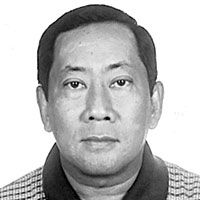The 75th anniversary of the Hiroshima bombing

Today is the 75th anniversary of the bombing of the city of Hiroshima, Japan. Three days later, the Americans bombed the city of Nagasaki with a similar nuclear bomb, which in effect marked the end of the War in the Pacific and World War II in general.
I have always been a World War II buff, especially that my uncle, the late Col. Manuel Segura, was fighting with the guerrillas in the mountains of Cebu, called the Cebu Area Command under an American engineer, Col. James Cushing. He was Cebu’s top military leader in World War II who was in contact with Gen. Douglas MacArthur.
While the bombing of Hiroshima and Nagasaki forced the Japanese to surrender, the island of Cebu was still being liberated by the Americal Division when the war suddenly ended on Aug. 15,1945, with Japanese Emperor Hirohito broadcasting an end to the war. However in Cebu, it took another 13 days for the Japanese troops to surrender to the Americal Division in Ilihan, Tabogon in the northern part of Cebu. (Incidentally, I wrote a similar piece in this column on the 65th anniversary of the bombing of Hiroshima and Nagasaki.)
In Cebu, the Japanese Army was led by Gen. Kataoka, Gen. Fukue and Admiral Harada together with 2,667 Japanese soldiers and Japanese women nurses. The Americal Division was led by Gen. William H. Arnold, who accepted the Japanese surrender. Two days later, some 7,200 Japanese soldiers surrendered in Ilihan, Tabogon, thus bringing to 9,867 the total number of Japanese soldiers who surrendered in the island of Cebu. They were loaded onto 6x6 trucks and driven to the Port of Cebu and loaded onto American troop ships, as the US Army did not have any provision or camp to handle prisoners of war.
As it turned out, when Japan officially gave its unconditional surrender, Gen. Douglas MacArthur was assigned to be the administrator in Japan. He ordered the Americal Division to immediately sail for Japan, but it took a while for the Americal Division to make their move as the Japanese were still surrendering in Cebu. When all 9,867 Japanese prisoners of war were on board the troop ships, the Americal Division proceeded to Japan to take on its new role.
Ten years ago, my sister Adela, who married a Japanese named Yuki Kono, brought me to see Hiroshima. It was quite eerie to see the Genbaku Dome, which was where the nuclear bomb named “Little Boy” exploded a few hundred meters above ground. The bomb was dropped from the Enola Gay, a B-29 Superfortress. Today it is the site of the Hiroshima Peace Memorial and I’m sure a memorial service is being held there today for the 75th anniversary of the bombing of Hiroshima.
The Hiroshima Memorial Museum is full of artifacts of the effects of the bomb. What was nice was a before-and-after diorama showing a map of Hiroshima before and a map after the bomb devastated the city. When I noticed my watch showing 3 p.m., I prayed the Chaplet of the Divine Mercy for those who died in Hiroshima and would you believe, a double rainbow appeared after I ended my prayer. Many people noticed the rainbow, perhaps a good sign.
Anyway, four years ago, I also visited the city of Nagasaki with my good friend Bobby Joseph and we were given a special dinner by the Governor of Nagasaki Prefecture Hodo Nakamura, who was also celebrating his birthday. I’m really blessed that I was able to be right under the spot where the nuclear bomb dubbed “The Fat Man” exploded a few hundred feet over the city of Nagasaki.
In Nagasaki, we learned that there were only 150 Japanese soldiers killed and there were eight Allied prisoners of war, an RAF POW named Ronald Shaw who died. 24 Australian POWs survived, as well as an American POW named Joe Kieyoomia who survived thanks to a wall in his cell. These are truly remarkable stories of the war.
The significance of what happened to these two Japanese cities that ended the Second World War was that the new technology of war literally brought nuclear bombs to many militarized nations and thus we have become a world fearful of annihilation by a nuclear conflict. However, thanks to what is known as Mutually Assured Destruction (MAD), a doctrine by military strategists that assures a full-scale use of nuclear weapons by two or more opposing sides would assure the mutual destruction of both the attacker and the defender, nuclear war has been avoided even by nuclear-armed nations.
Today in the Hiroshima Peace Memorial the effects of the atomic bomb like the Genbaku Dome has been preserved as a stark and powerful symbol of the most destructive force ever created by mankind. But will the supposed end of the world happen due to a nuclear exchange? It can still happen!
* * *
Email: [email protected]
- Latest
- Trending





























